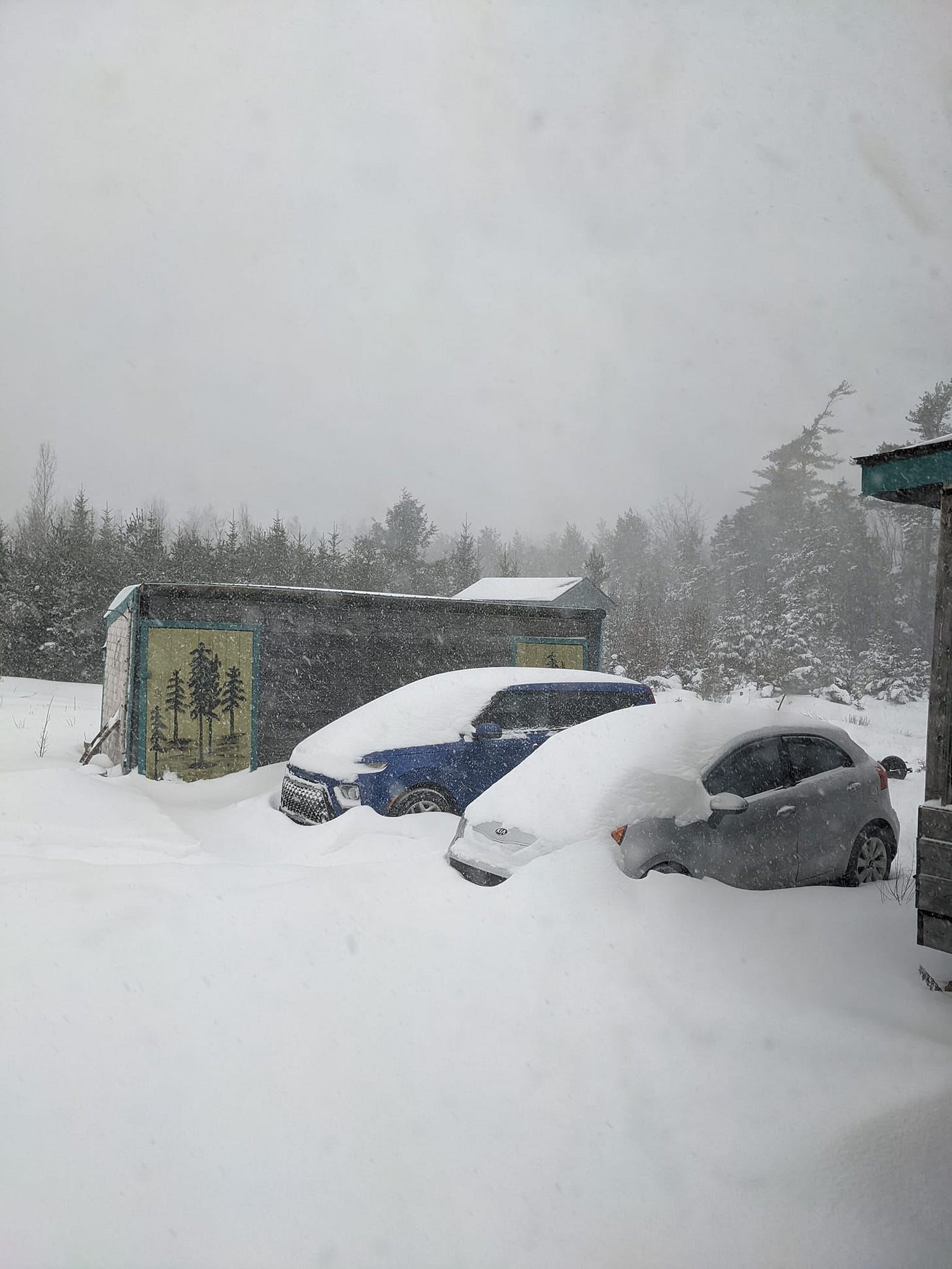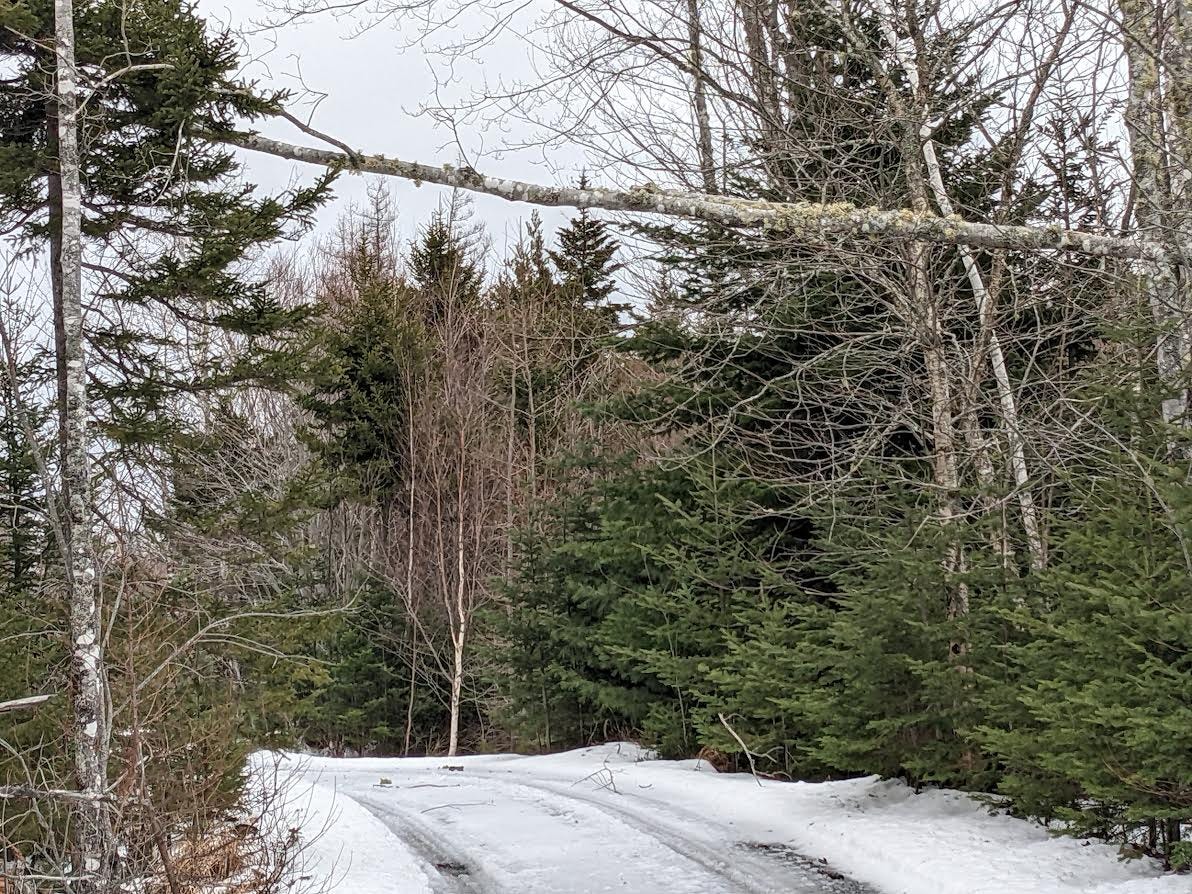The Rites of Spring: Part Three
The official arrival of spring is a couple of weeks off, but already the first halting signs of the seasonal change are showing themselves. Yesterday, for example, as the last remnants of our most recent snow storm trickled back into the ground, I could hear the plaintive cooing of the first mourning doves here since they left last fall.
The ravens flirt in pairs in the sky, swirling and skirmishing, their hollow “tok, tok” calls ringing out over the marsh.
The much smaller but no less nimble chickadees flit in the trees.
Other birds and animals are still scarce. Later, the booming nighthawks will return, along with the diminutive but powerful hummingbirds, the latter having made their remarkable journey from Central America or Mexico, traversing the vast range of the United States to arrive at our feeder.
“During migration, a hummingbird's heart beats up to 1,260 times a minute,” according to the website, Hummingbird Central.
The same site reports that hummingbirds fly alone, “often on the same path they have flown earlier in their life, and fly low, just above tree tops or water. Young hummingbirds must navigate without parental guidance.”
It brings to mind the lonely traverses horsemen make in such Cormac McCarthy novels as All the Pretty Horses, and The Crossing.
As spring returns, the raptors ride the airstreams, circling in the sky, while far beneath the mice, voles, and squirrels scurry for safety. The owls glide.
The coyotes gather, howling and yelping.
The first plants unfurl, the ferns, the Lady Slippers, the Irises. Trees will bud, and the first green leaves will unfold, adding colour to the monochrome early spring landscape.
All of this abundant life is yet to come. Something to anticipate. For now, winter pummels us one last time. February proved particularly challenging with one, sometimes two storms a week. We received everything from 30 centimetres of snow one day, to hurricane force winds with 50 millimetres of rain two days later.
After one of the numerous snow storms.
Today’s storm is drenching us with some 40 to 50 millimetres of rain again, and more strong winds. The trees bow in obedience as the wind shouts its cruel song. Those maples, birches, and firs that rebel against the wind’s insistence pay the price and are pummelled to the ground.
This maple is suspended above the road after hurricane force winds snapped it. So far its resisted attempts at being roped down.
All the freezing and thawing was particularly hard on the two-kilometre logging road that serves as our lane. Alternately, the lane was a sheer sheet of ice, or immersed in flood waters from the surrounding marshes - either way, impassable. For 10 weeks, I managed to leave our property only once a week for groceries, and other necessities.
A few times we had to wait a couple of days to get plowed out. It’s all part of living back here.
Our normally placid brook following one of the rain storms.
Of course, it’s to be expected in this time of unprecedented climate change. The scientists warned us for years that as the planet heated up, we would experience more severe storms more frequently. Now the storms that rush into or stall over Nova Scotia tend to be part of continental-wide events, spanning America’s South to Canada’s Northeast. These massive weather movements deliver misery and leave destruction in their wakes, forces that dwarf our humble achievements on this planet, and plainly inform of us of our insignificance.
One of two tents that hurricane-force winds destroyed on our property in one of the storms. In this instance, this large tent - metal poles, two-by-fours, fabric and all - was picked up and hurled roughly three hundred metres away from its original spot, sailing over 15-and-20-foot trees, no less. This tent held about 200 bales of hay, which fortunately we had moved into the barn a week earlier.
At this time of year, our land is at its most bleak. The snow that softens the landscape has melted away, and the concealing foliage hasn’t replaced it. The slash leftover from logging years ago litters the woods, and the land reveals itself in shades of brown and grey.
Even so, spring is on the way.
In terms of my use of the “rites of spring” in three essays now, it is a homage to the renowned composer Igor Stravinsky. I’ve loved this particular symphony for decades. In his seminal history of music in the 20th century, The Rest is Noise, New Yorker music critic Alex Ross describes the first part of Stravinsky’s The Rite of Spring as “viscerally exciting, even celebratory. Part II is grittier, swaying between languor and violence.”
Igor Stravinsky’s The Rite of Spring.
Soon the rites of spring will begin. The animals will emerge from their cubbyholes and dance and gambol in the night. The birds will flock, and the plants sprout. The dogs will prance up the lane, and life, again, will begin anew.





Rebirth !
Lyrical and evocative; thanks, Charles